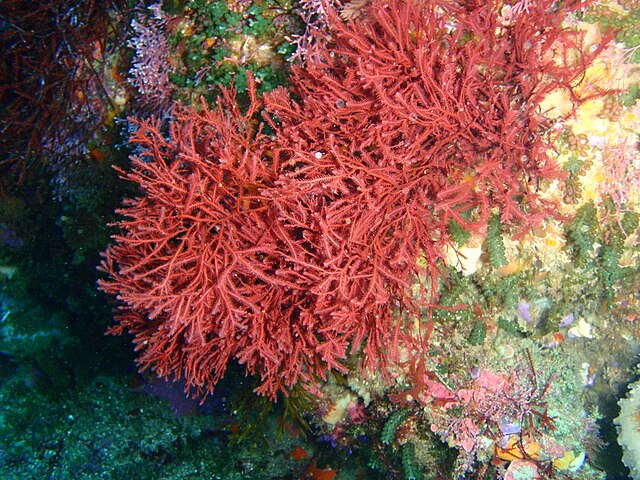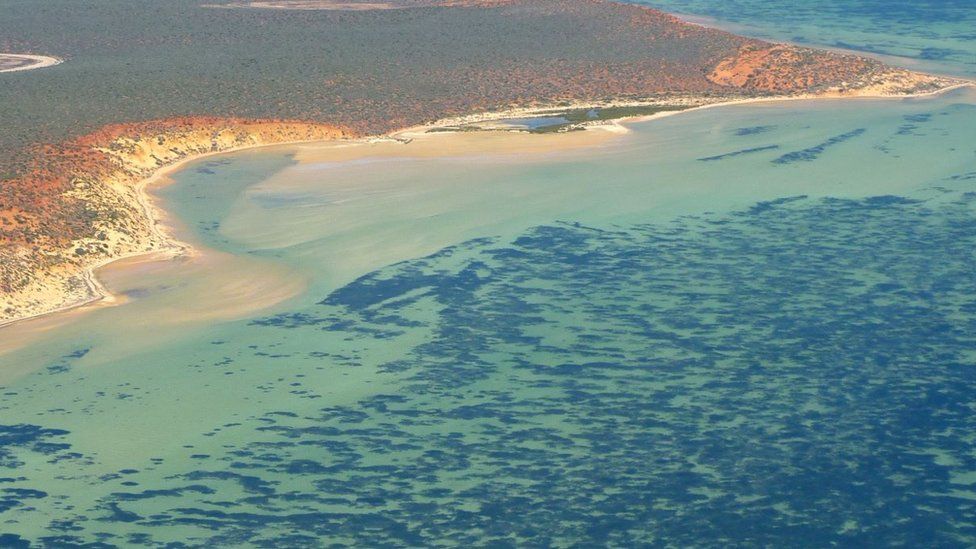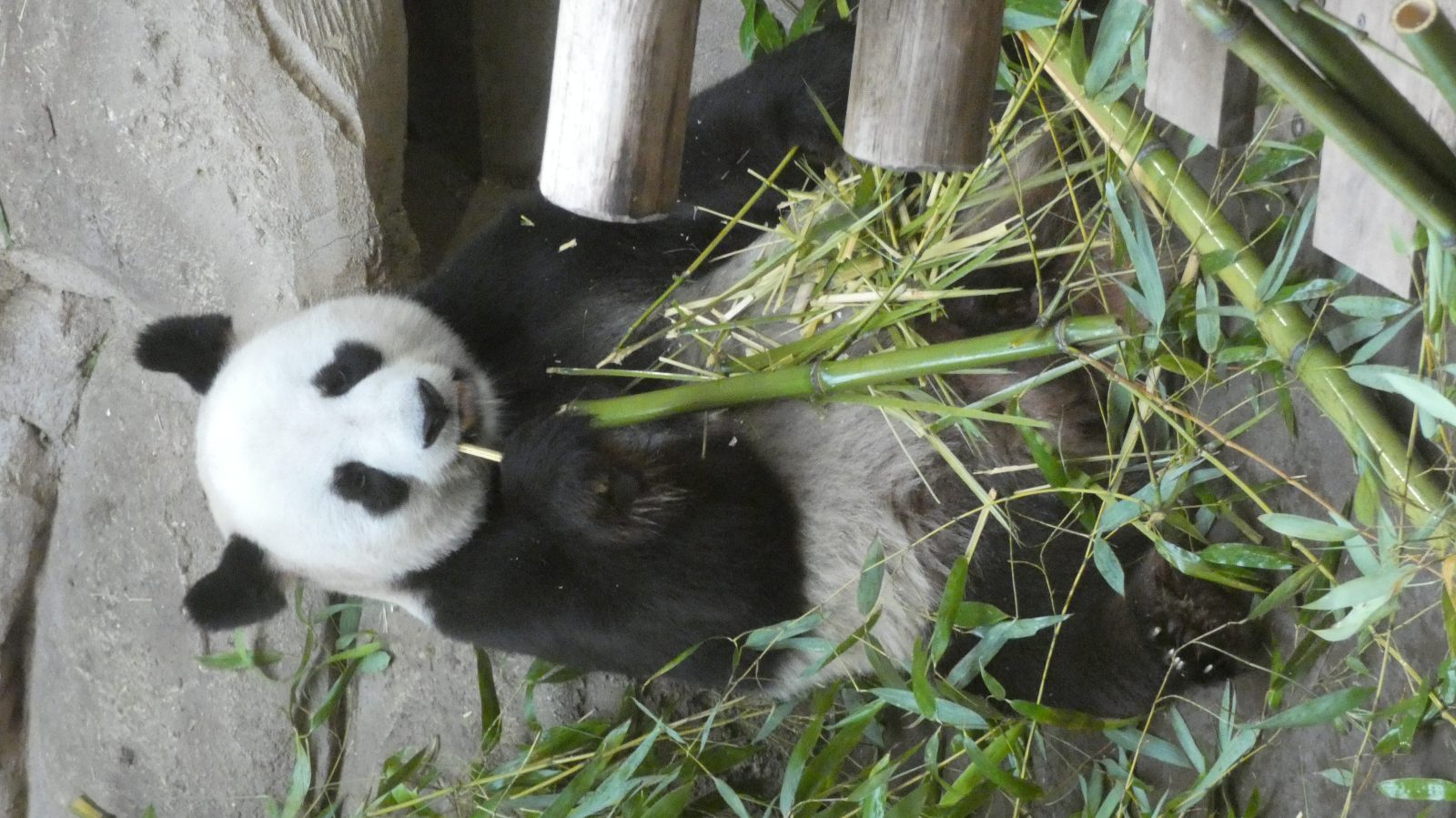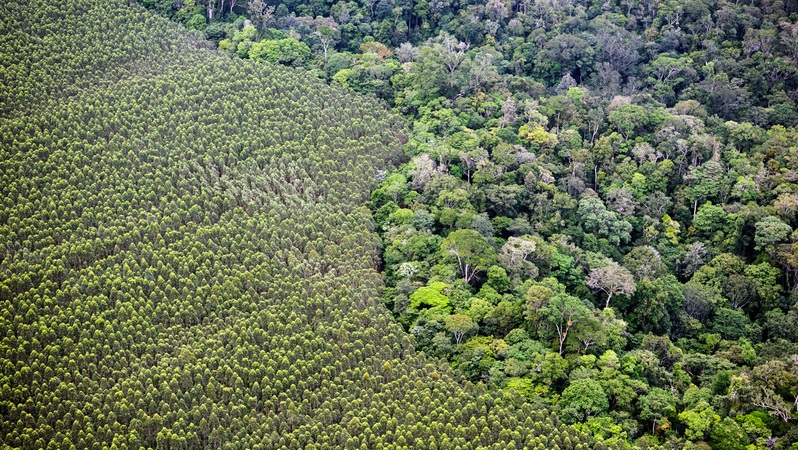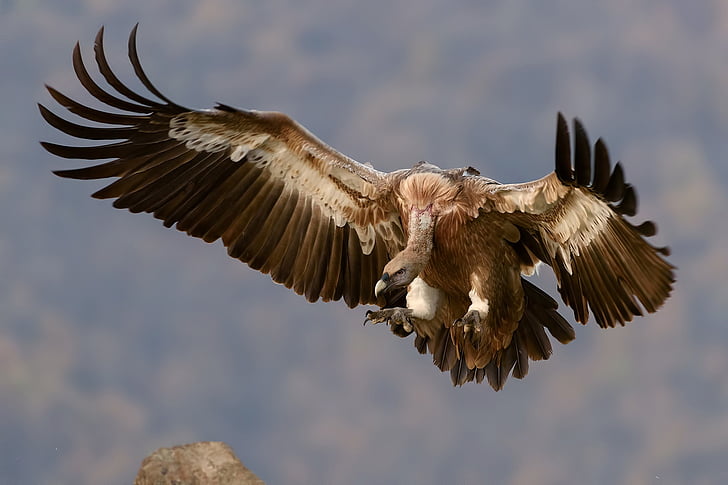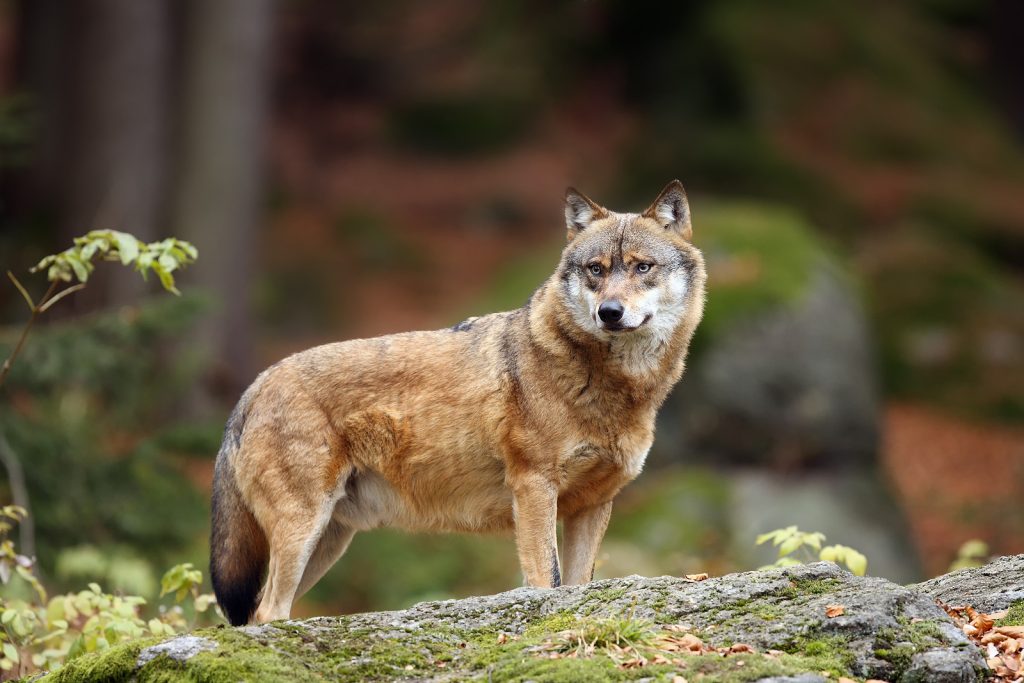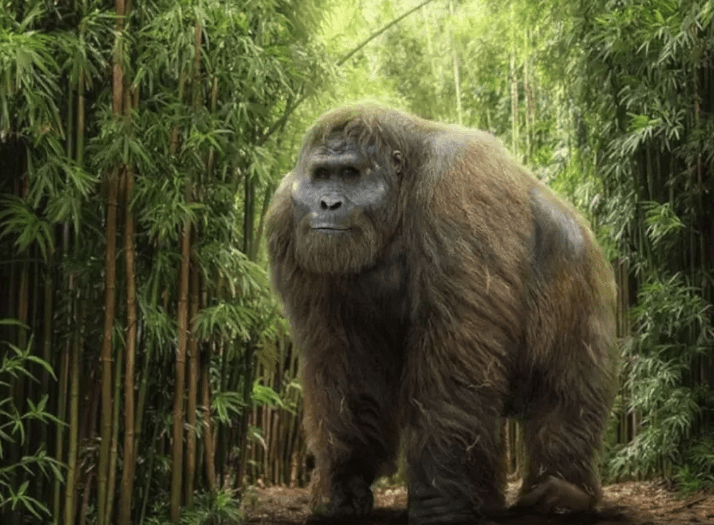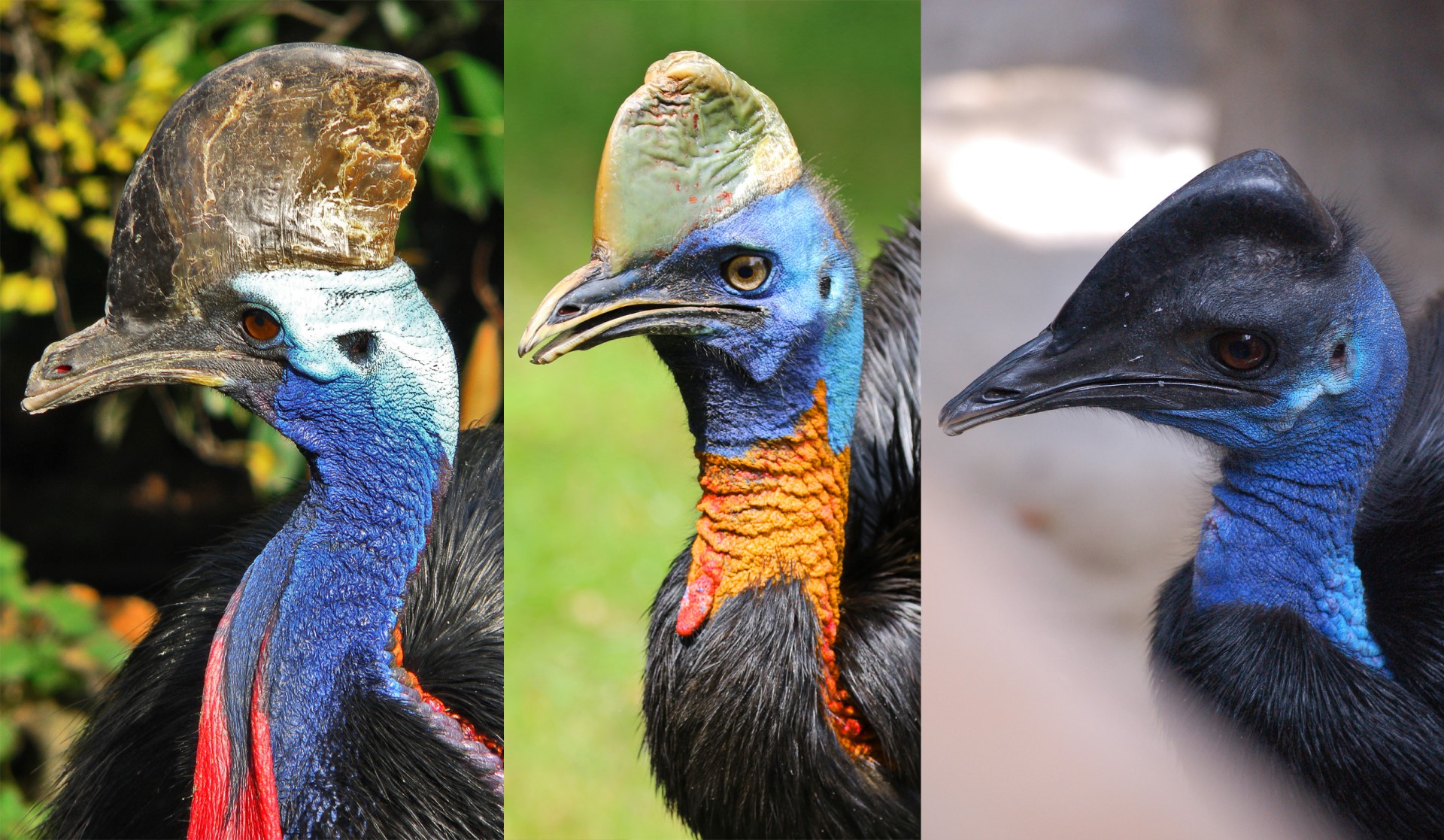
PaleoNeolitic (montage creator) BS Thurner Hof Kora27 Martin Sordilla – Wikimedia Commons
Cassowary
- There are 3 species of Cassowary, from left to right Southern, Northern and dwarf Cassowary. The Southern Cassowary is the 3rd largest and 2nd heaviest bird in the world, after ostrich and rhea.
90% of their diet consists of fruit. Having said this, they are classed as omnivores and take a range of foods including shoots and grass seeds, fungi invertebrates, eggs carrion fish and small vertebrates such as rodents, small birds, frogs, lizards and snakes. While all of the ratite family can eat meat, Cassowaries are by definition the most omnivorous, and while other ratites will eat meat when other food is scarce Cassowaries take more meat than others.
While the southern Cassowary has part of its range on Australia, all three have their main range on New Guinea
- The southern Cassowary is listed as least concern by the IUCN, however with a 4400 individuals other agencies class it as endangered.
- The northern Cassowary is also listed as least concern by IUCN and this population numbers 10,000-20,000
- The dwarf Cassowary is listed as least concern as well. Unfortunately I cannot find estimates for this species, but with an overall population of 20,000-50,000 it is likely to be the most common
Adults are formidable enough that there is no regular predation. However, a range of birds such as the Papuan eagle, mammals such as the New Guinea singing dogs, and reptiles such as pythons and monitor lizards all take young when adults are not protecting enough.
Below is any news we have written on this species, and below that will be listed places you can see this species in the wild. Should you work in conservation or tourism on this range of species do get in touch through the list your wild place link on the home page.

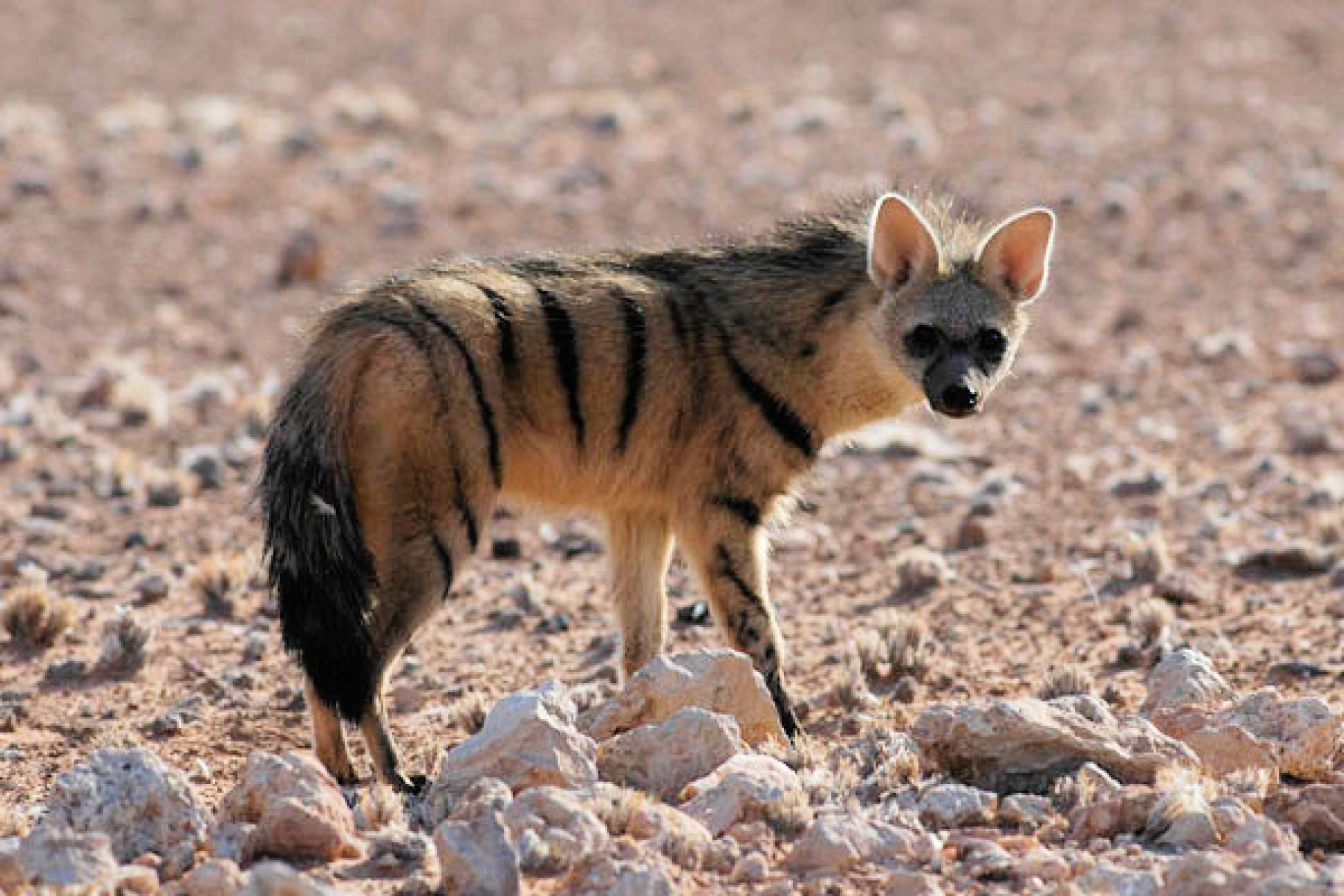
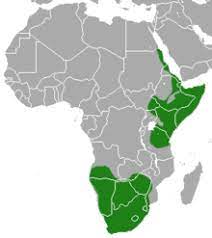 The aardwolf is the smallest member of the Hyaenidae family, as you can see from the map, it is a species with two separated populations, one in East Africa and one in Southern Africa. It is insectivorous, and exclusively nocturnal, and is generally thought of as one of the harder animals to see in the wild. If incredibly lucky, you can see them feeding alongside Aardvarks, and even Pangolins, but this is rare. They favour open dry plains and savannahs.
The aardwolf is the smallest member of the Hyaenidae family, as you can see from the map, it is a species with two separated populations, one in East Africa and one in Southern Africa. It is insectivorous, and exclusively nocturnal, and is generally thought of as one of the harder animals to see in the wild. If incredibly lucky, you can see them feeding alongside Aardvarks, and even Pangolins, but this is rare. They favour open dry plains and savannahs.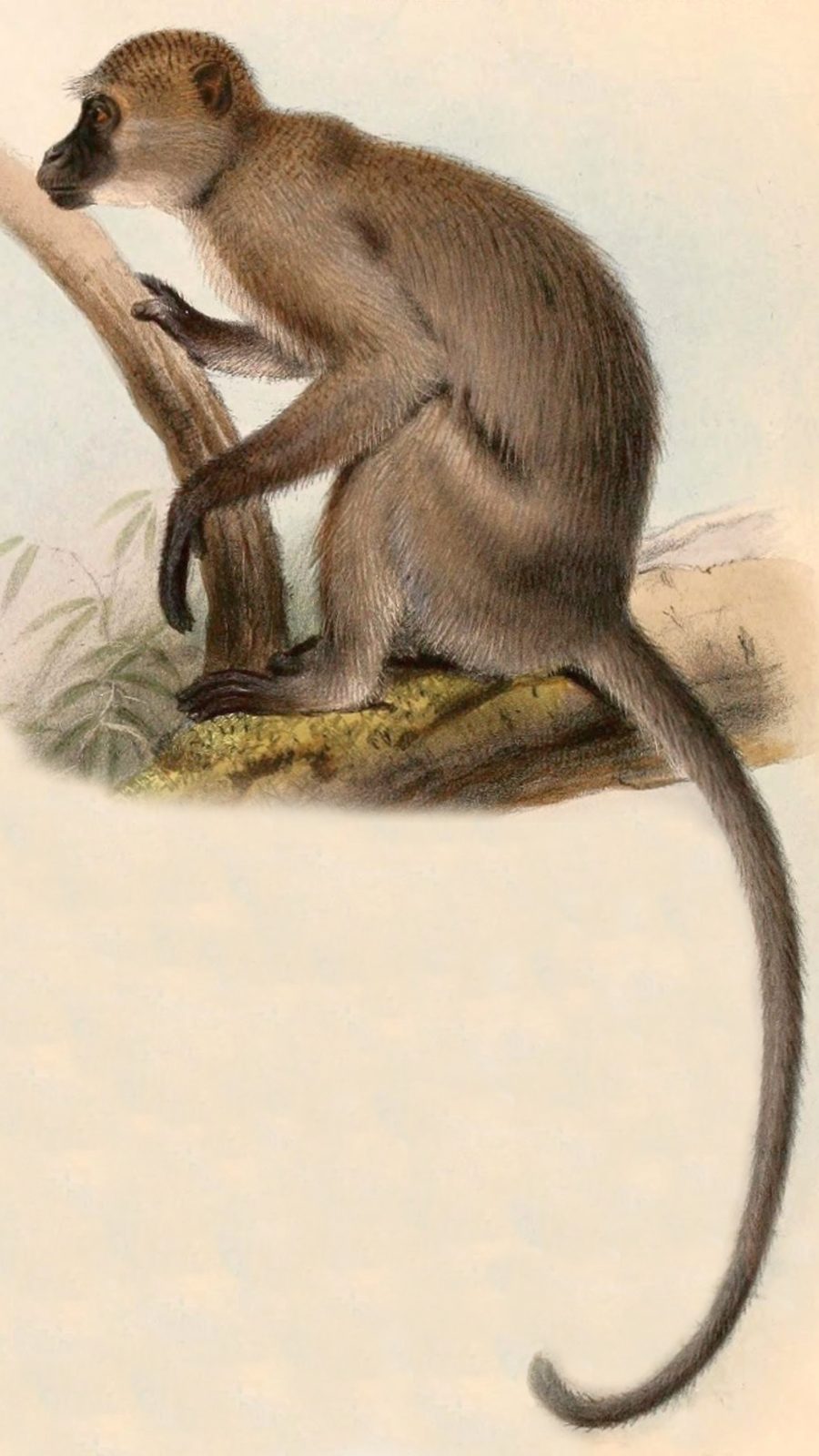
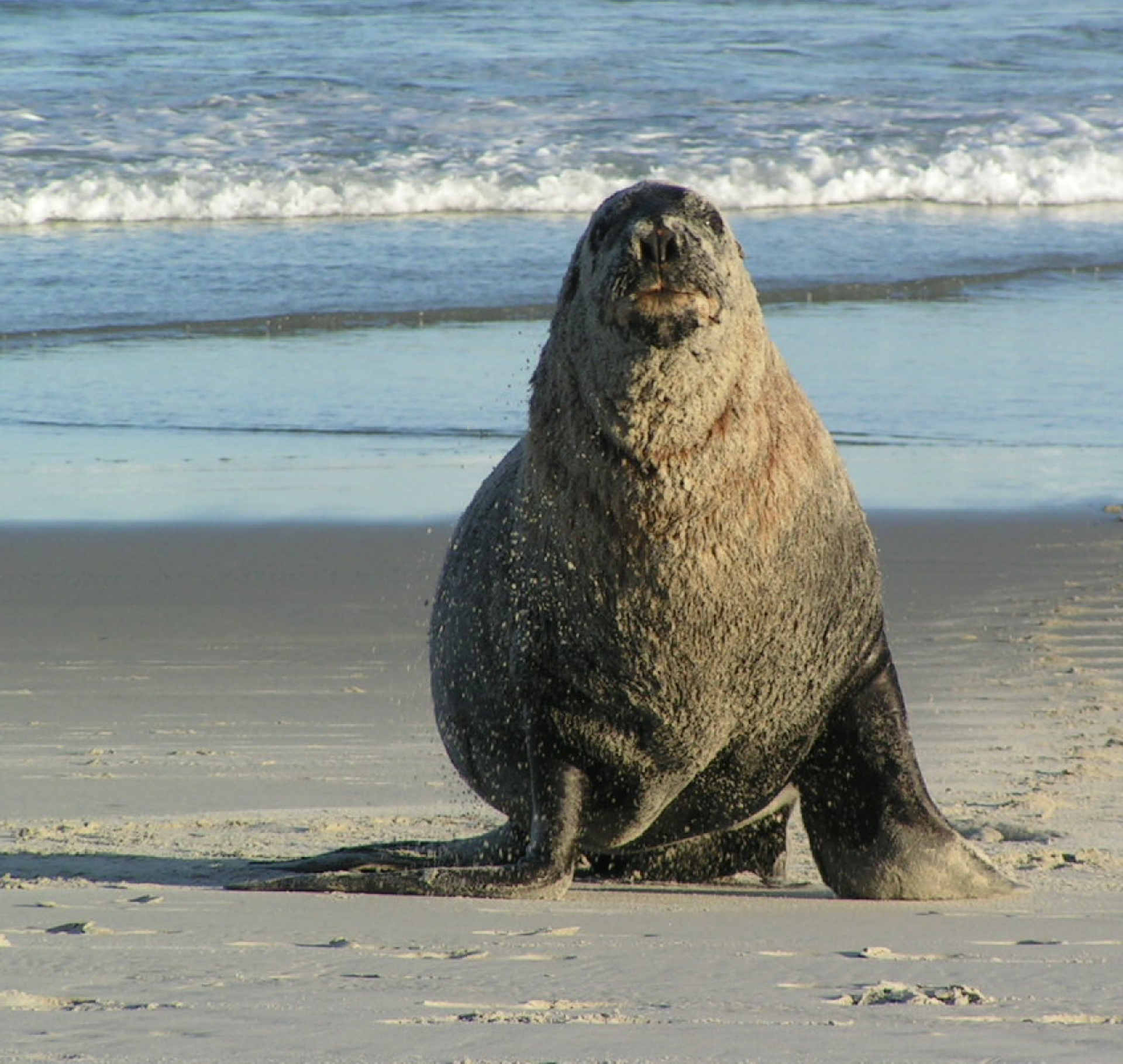

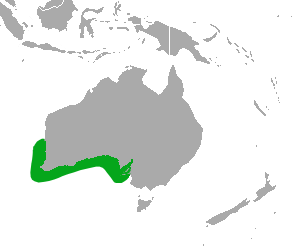 only endemic pinniped found in Australia.
only endemic pinniped found in Australia.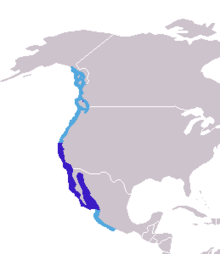 the west coast of north America. On this map, the navy blue marks the breeding rance, while the light blue shows the total range that they can be found in. It should be noted, that previously the Japanese and Galapagos sealion were both considered subspecies of the Californian species, but no longer. They can stay healthy, for a time, in fresh water, and have been seen living for a while in Bonneville dam – 150 miles inland.
the west coast of north America. On this map, the navy blue marks the breeding rance, while the light blue shows the total range that they can be found in. It should be noted, that previously the Japanese and Galapagos sealion were both considered subspecies of the Californian species, but no longer. They can stay healthy, for a time, in fresh water, and have been seen living for a while in Bonneville dam – 150 miles inland.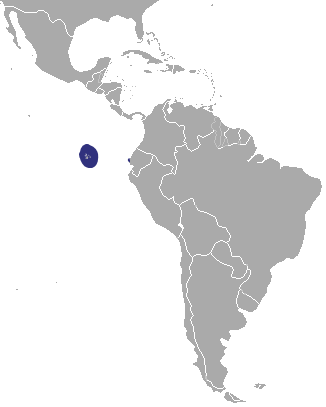 on all of the Galapagos Islands, as well as (in smaller numbers) on Isla de la Plata, which is just 40km from Puerto López a village in Ecuador. There have also been recorded sightings on the Isla del Coco which is 500km southwest of Costa Rica (and 750km from the Galapagos). These are not regular, and so have been considered vagrant. It is of course possible that historically they roamed here, but we cannot say.
on all of the Galapagos Islands, as well as (in smaller numbers) on Isla de la Plata, which is just 40km from Puerto López a village in Ecuador. There have also been recorded sightings on the Isla del Coco which is 500km southwest of Costa Rica (and 750km from the Galapagos). These are not regular, and so have been considered vagrant. It is of course possible that historically they roamed here, but we cannot say. known as the Hooker sealion) is native to south island, though before 1500 it is thought that it was also found on north island. They tend to breed on Subarctic islands of Auckland and Campbell (99% of the pups are born in these islands). In 1993, sealions started breeding on South Island again for the first time in 150 years.
known as the Hooker sealion) is native to south island, though before 1500 it is thought that it was also found on north island. They tend to breed on Subarctic islands of Auckland and Campbell (99% of the pups are born in these islands). In 1993, sealions started breeding on South Island again for the first time in 150 years.

